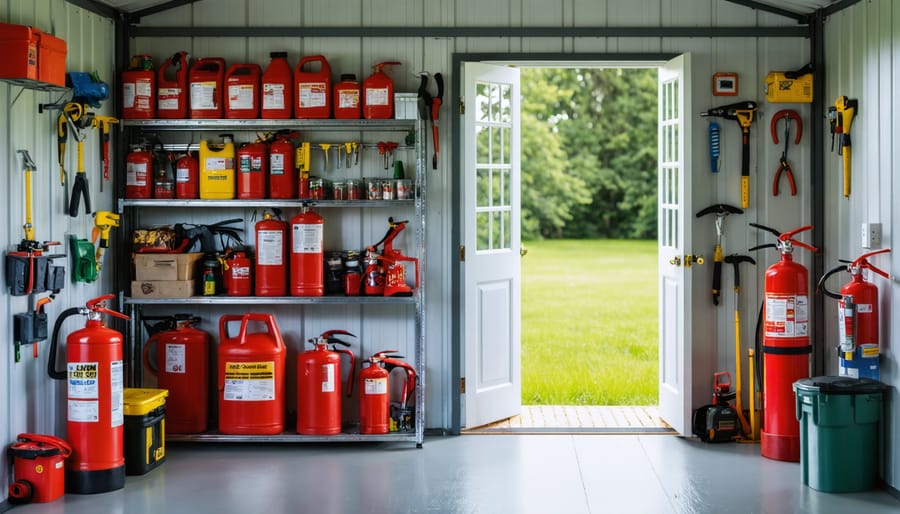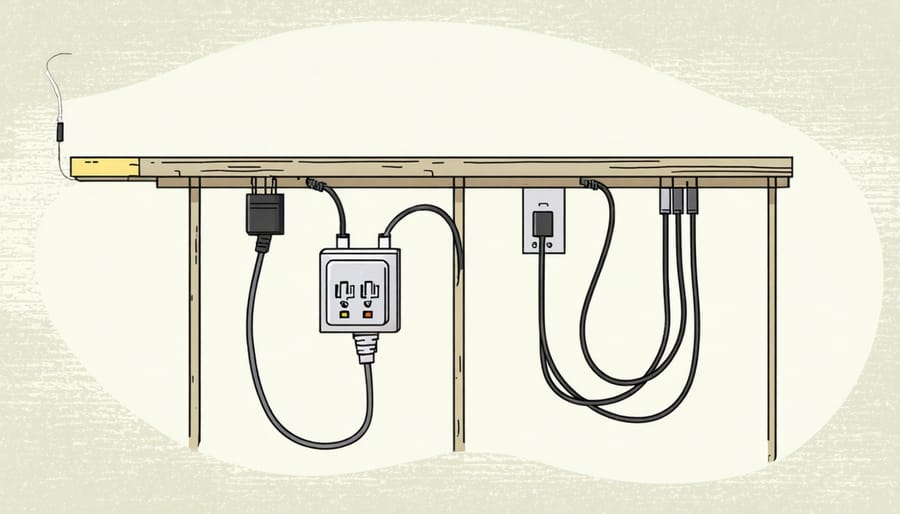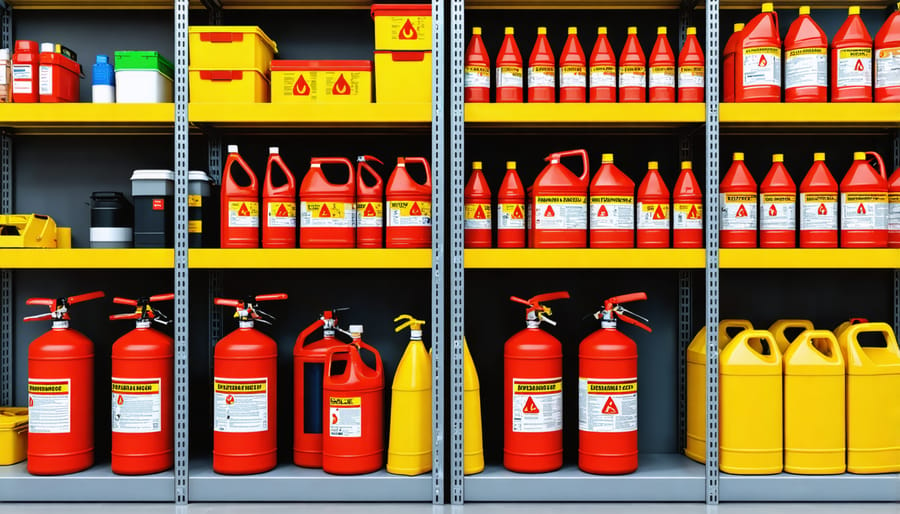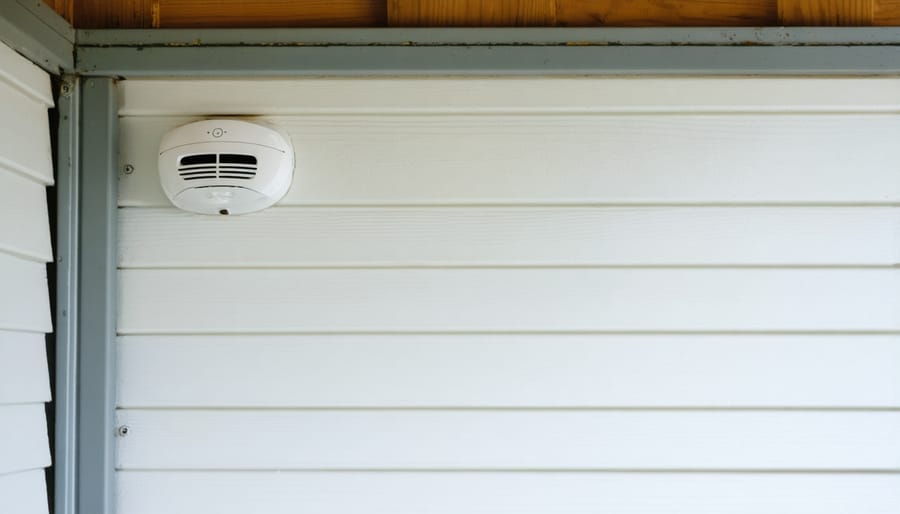Protect Your Storage: Essential Fire Safety Measures Every Shed Owner Must Know

Every year, thousands of families lose valuable possessions and face potential tragedy due to preventable shed fires. These devastating incidents often start silently – a forgotten electrical connection, improperly stored chemicals, or combustible materials left too close to heat sources – before erupting into destructive blazes that threaten homes and lives. While garden sheds may seem like simple storage spaces, they frequently house a dangerous combination of flammable materials, electrical equipment, and fuel-powered tools that create perfect conditions for fire hazards.
Understanding shed fire risks isn’t just about protecting tools and holiday decorations – it’s about safeguarding your home and family from a threat that can spread rapidly to nearby structures. Whether you’re storing lawn equipment, maintaining a workshop, or using your shed for general storage, implementing proper fire safety measures isn’t optional – it’s essential for protecting your property and preventing catastrophic losses. This guide provides critical information about shed fire prevention, early warning systems, and emergency response strategies that every shed owner needs to know.
Common Causes of Shed Fires
Electrical Issues
Electrical issues are among the leading causes of shed fires, often stemming from DIY wiring mistakes or aging installations. Faulty wiring can create dangerous hot spots in walls, while overloaded circuits from running too many power tools or appliances simultaneously can cause wires to overheat. Improper electrical installations, particularly those done without proper permits or professional guidance, pose significant risks.
To prevent electrical fires, ensure all wiring meets local building codes and is installed by a qualified electrician. Use appropriate gauge wiring for your power needs, install GFCI outlets for added safety, and regularly inspect cords for signs of wear or damage. Avoid using extension cords as permanent power solutions, and never daisy-chain power strips. If you notice flickering lights, warm outlets, or burning smells, disconnect power immediately and contact an electrician.

Flammable Materials Storage
Proper storage of flammable materials is crucial for preventing shed fires. Keep gasoline, paint thinners, and other combustible liquids in approved safety containers with tight-fitting lids. Store these containers at ground level, away from direct sunlight and heat sources. Never exceed storing more than 10 gallons of gasoline, and ensure all containers are clearly labeled.
Create a designated storage area with good ventilation, ideally near the shed entrance for quick access and removal if needed. Keep flammable materials away from power tools, electrical outlets, and battery-operated devices. Consider installing a flame-resistant storage cabinet for extra protection.
Always clean up spills immediately and dispose of oil-soaked rags in a metal container with a self-closing lid. Remember, even seemingly harmless items like oily rags can spontaneously combust if improperly stored.
Equipment and Tool Hazards
Hot tools and equipment pose significant fire risks in sheds. Never store gasoline-powered tools while they’re still warm, and keep battery chargers away from flammable materials. Ensure proper ventilation when charging batteries, as they can emit explosive gases. Store oily rags in metal containers with tight-fitting lids, and keep power tools unplugged when not in use. Regularly inspect electrical cords for damage to prevent short circuits.
Prevention and Safety Measures
Fire-Resistant Construction
When building or renovating your shed, choosing fire-resistant materials and construction methods is crucial for meeting essential safety regulations and protecting your property. Start with fire-rated walls using materials like cement board or fire-resistant drywall. Metal roofing offers excellent fire protection and durability, while fire-treated lumber provides structural integrity with added safety.
Consider installing a fire-resistant door, preferably metal, with self-closing hinges and proper weatherstripping to prevent fire spread. Fire-resistant caulk and sealants should be used around all openings, including windows and vents, to maintain the structure’s fire-resistance integrity.
For enhanced protection, add a layer of fire-resistant insulation between wall cavities. If your shed has electrical wiring, use metal conduit and fire-rated electrical boxes. Creating a non-combustible zone around your shed’s perimeter, using gravel or concrete, adds an extra layer of protection against external fire threats.
Remember to document all fire-resistant materials used, as this information may be valuable for insurance purposes and future modifications.
Safe Storage Solutions
Proper storage organization is your first line of defense against shed fires. Start by designating specific zones for different types of materials, keeping flammable items like gasoline, paint thinners, and other chemicals in sealed, fire-resistant containers. Store these away from potential ignition sources and ensure they’re elevated off the floor to prevent water damage.
Create a dedicated space for power equipment, ensuring batteries and charging stations are kept in a well-ventilated area. When storing lawn mowers or other gas-powered tools, always drain the fuel or use a fuel stabilizer during long-term storage.
Consider installing metal shelving units instead of wooden ones, as they’re less likely to contribute to fire spread. Keep oily rags in metal containers with self-closing lids, as these materials can spontaneously combust if improperly stored.
Maintain clear pathways between storage areas and ensure nothing blocks your exit routes. Label all containers clearly and keep an updated inventory of stored materials. This organization not only prevents accidents but also helps emergency responders identify potential hazards quickly if needed.

Electrical Safety
Proper electrical installation and maintenance in your shed is crucial for preventing fires. Start by having a qualified electrician install all wiring and outlets according to local building codes. Never attempt DIY electrical work unless you’re certified, as improper installations are a leading cause of shed fires.
Install GFCI (Ground Fault Circuit Interrupter) outlets to protect against electrical shocks and potential fire hazards, especially important in outdoor structures where moisture is common. Keep all electrical connections in weather-proof boxes and use outdoor-rated cables and fixtures.
Regularly inspect your shed’s electrical system for signs of wear or damage. Look for frayed wires, loose connections, or scorch marks around outlets. If you spot anything concerning, disconnect power to the shed and contact an electrician immediately.
Avoid overloading circuits by using appropriate extension cords rated for outdoor use. Never daisy-chain power strips or extension cords, as this can create dangerous heat buildup. When using power tools in your shed, unplug them after use and store them safely.
Consider installing motion-sensor lights instead of leaving lights on continuously, and use LED bulbs which generate less heat. Keep electrical panels clear of stored items, maintaining at least three feet of clearance for proper ventilation and easy access in emergencies.
For additional safety, install surge protectors to guard against power spikes that could damage equipment or start fires.

Essential Safety Equipment
Fire Detection Systems
Protecting your shed with reliable fire detection systems is crucial for early warning and prevention of devastating fires. Installing smoke detectors specifically designed for outdoor structures can provide vital early warnings, giving you precious time to respond to potential fire threats. Modern smart detection systems can even send alerts directly to your phone, allowing you to monitor your shed’s safety from anywhere.
When choosing detectors, opt for models rated for outdoor use and extreme temperatures. Battery-powered units are ideal for sheds without electrical connections, but remember to check batteries monthly. Consider installing both smoke and heat sensors for comprehensive protection, as heat detectors are particularly effective in dusty environments where smoke detectors might trigger false alarms.
Position detectors on the ceiling, away from corners, and install multiple units in larger sheds. For enhanced safety, connect your shed’s detection system to your home’s alarm network if possible. Regular testing and maintenance of these devices is essential to ensure they’re ready when needed.
Fire Extinguishers
Having the right fire extinguisher in your shed is crucial for quick response to potential fires. For sheds, we recommend keeping both a Class A extinguisher for common materials like wood and paper, and a Class B extinguisher for flammable liquids like gasoline and oil. If you store electrical equipment, consider a Class C extinguisher as well.
Mount your fire extinguisher near the shed entrance where it’s easily accessible, but away from areas where a fire is likely to start. This ensures you can grab it quickly without having to reach through flames. For larger sheds, consider installing multiple extinguishers at opposite ends.
Remember to check your extinguishers monthly for signs of damage, and ensure the pressure gauge shows a full charge. Replace or service them according to the manufacturer’s guidelines, typically every 10-12 years. Train everyone who uses the shed on how to operate the extinguisher using the PASS method: Pull, Aim, Squeeze, and Sweep.
Keep the extinguisher’s location well-marked and maintain a clear path to it at all times. Even a few seconds can make a difference in an emergency.
Emergency Response Plan
Having a well-thought-out emergency plan is crucial for protecting your family and property in case of a shed fire. Start by creating detailed emergency response procedures that everyone in your household understands and can follow.
Begin by establishing clear evacuation routes from your property and designate a safe meeting point away from the shed. Post emergency contact numbers, including the fire department, in visible locations both inside your home and in a weather-protected area near the shed.
Create a simple checklist that includes:
– Immediate actions upon discovering a fire
– Location of fire extinguishers and how to use them
– Steps to alert other household members
– Safe evacuation routes
– Meeting point location
– Emergency contact numbers
Practice your emergency plan with family members at least twice a year. This helps ensure everyone knows their role and can act quickly under pressure. Keep a basic emergency kit nearby that includes a flashlight, first-aid supplies, and any important documents related to your shed and its contents.
Remember to regularly review and update your plan, especially when making changes to your shed’s layout or contents. Share your emergency plan with neighbors and ensure they know how to contact you in case they spot danger while you’re away.
Protecting your shed from fire hazards is not just about safeguarding a storage space – it’s about preserving your valuable belongings and ensuring the safety of your property and loved ones. By implementing proper electrical safety measures, maintaining good housekeeping practices, and installing appropriate fire detection systems, you can significantly reduce the risk of shed fires. Remember to regularly inspect your shed for potential hazards, keep flammable materials properly stored, and maintain clear access paths for emergency situations. Creating and practicing an emergency response plan with your family is equally crucial. Taking these preventive steps today can save you from devastating losses tomorrow. While no prevention method is foolproof, combining multiple safety measures creates a robust defense against shed fires, giving you peace of mind and protecting your investment for years to come.

